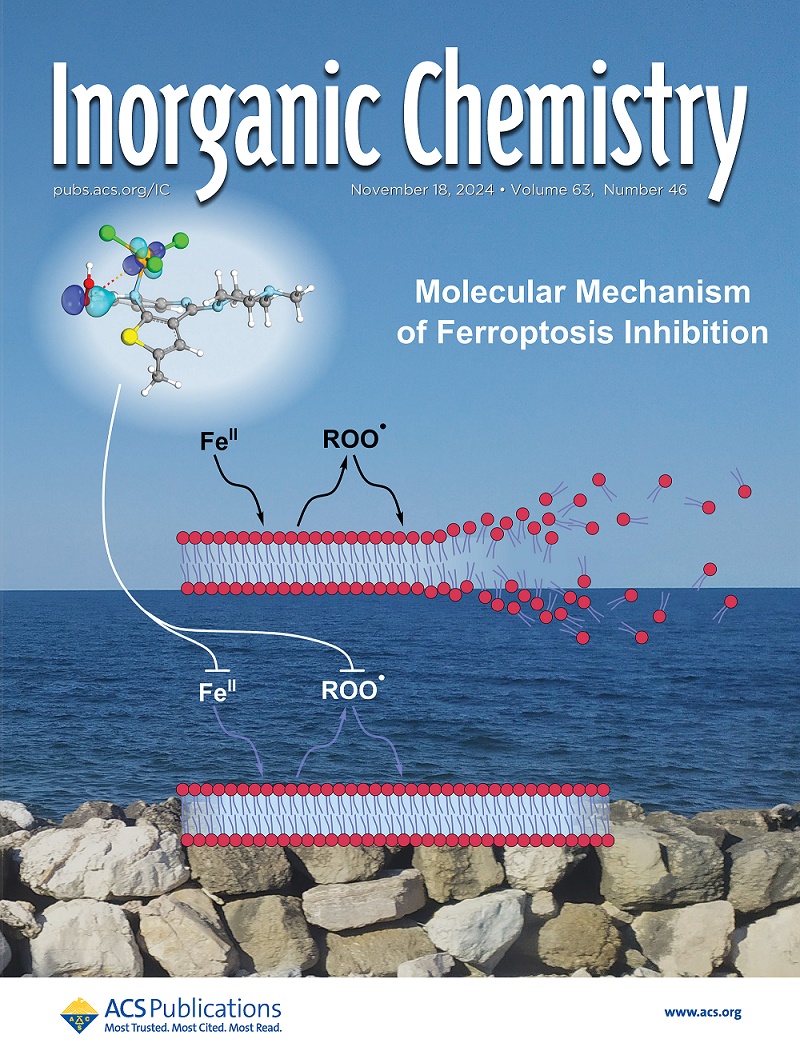From Oxidized PrNi0.9Al0.1O3 to Reduced PrNi0.9Al0.1O2+δ Perovskite Nickelates: Stabilization of Infinite-Layer Specimens with Monovalent Ni in the Bulk Polycrystalline Form.
IF 4.3
2区 化学
Q1 CHEMISTRY, INORGANIC & NUCLEAR
引用次数: 0
Abstract
Recently, a new class of high-temperature superconductors, RNiO2 (where R represents rare-earth elements) with infinite-layer (IL) structure, has been identified. They possess the same structural framework as the renowned high-Tc cuprates but with nickel replacing copper as the central element. In this study, we successfully synthesized infinite-layer samples of PrNi0.9Al0.1O2+δ in the bulk polycrystalline form through topotactic reduction of the PrNi0.9Al0.1O3 orthorhombic perovskite, via treatment with CaH2. The incorporation of aluminum at the octahedral sites promotes the stabilization of bulk derivatives of the infinite-layer structure since unreduced [AlO6] octahedra keep the layers together and prevent their decomposition. The lack of superconductivity in bulk samples has been a subject of intense debate in recent literature. One major theoretical question concerns whether hydrogen becomes incorporated into the structure during the reduction from RNiO3 to RNiO2─as suggested by theory. Here, we present neutron powder diffraction data demonstrating that hydride ions indeed reside within the IL lattice in samples of stoichiometry PrNi0.9Al0.1O2.10H0.16. Additional crystallographic analyses were carried out using temperature-dependent synchrotron X-ray diffraction on both reduced and oxidized phases. Furthermore, spectroscopic analysis via XAS and magnetometry confirms the reduction of Ni3+ to the Ni+ oxidation state, aligning with the crystallochemical evidence.从氧化PrNi0.9Al0.1O3到还原PrNi0.9Al0.1O2+δ钙钛矿镍酸盐:一价镍在块状多晶形式下的无限层试样的稳定性
最近,一类新的高温超导体RNiO2(其中R代表稀土元素)被发现具有无限层(IL)结构。它们具有与著名的高tc铜酸盐相同的结构框架,但以镍代替铜作为中心元素。在本研究中,我们通过CaH2处理,将PrNi0.9Al0.1O3正交钙钛矿进行拓扑还原,成功地合成了体积多晶形式的PrNi0.9Al0.1O2+δ的无限层样品。由于未还原的[AlO6]八面体将层保持在一起并防止其分解,因此铝在八面体位置的掺入促进了无限层结构的体衍生物的稳定。在最近的文献中,散装样品中缺乏超导性一直是一个激烈争论的主题。一个主要的理论问题是,在从RNiO3还原为RNiO2的过程中,氢是否像理论所建议的那样被纳入结构。在这里,我们提供的中子粉末衍射数据表明,在化学计量PrNi0.9Al0.1O2.10H0.16的样品中,氢化物离子确实存在于IL晶格内。使用温度相关的同步加速器x射线衍射对还原相和氧化相进行了额外的晶体学分析。此外,通过XAS和磁强计的光谱分析证实了Ni3+还原为Ni+氧化态,与晶体化学证据一致。
本文章由计算机程序翻译,如有差异,请以英文原文为准。
求助全文
约1分钟内获得全文
求助全文
来源期刊

Inorganic Chemistry
化学-无机化学与核化学
CiteScore
7.60
自引率
13.00%
发文量
1960
审稿时长
1.9 months
期刊介绍:
Inorganic Chemistry publishes fundamental studies in all phases of inorganic chemistry. Coverage includes experimental and theoretical reports on quantitative studies of structure and thermodynamics, kinetics, mechanisms of inorganic reactions, bioinorganic chemistry, and relevant aspects of organometallic chemistry, solid-state phenomena, and chemical bonding theory. Emphasis is placed on the synthesis, structure, thermodynamics, reactivity, spectroscopy, and bonding properties of significant new and known compounds.
 求助内容:
求助内容: 应助结果提醒方式:
应助结果提醒方式:


